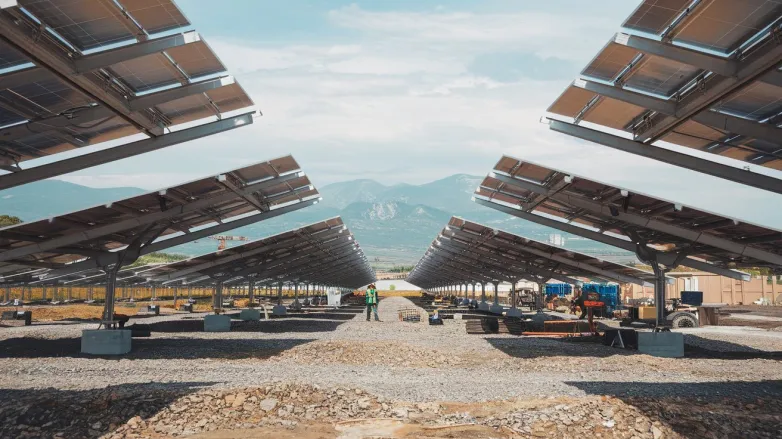US Solar Manufacturing to Receive 25% Tax Credit
- The US Treasury's new tax credit for solar manufacturing aims to boost domestic production, with Qcells leading the charge to reshape the solar landscape and energy security.

The US Treasury has announced that solar ingot and wafer manufacturing facilities will qualify for a 25% investment tax credit under the CHIPS and Science Act of 2022. This final ruling includes semiconductor wafer production used in photovoltaic solar energy and aims to incentivize the construction of new facilities by 2026. The Solar Energy Industries Association (SEIA) highlighted this move as essential for advancing the domestic solar supply chain, which currently lacks operational ingot and wafer production.
Qcells, a subsidiary of Hanwha Solutions, is one of the companies poised to benefit from this tax credit, with a factory under construction in the US for producing solar components. The firm has committed $2.5 billion to the solar supply chain, aiming to enhance US manufacturing capabilities amid concerns over reliance on Chinese solar panel production. Danny O’Brien from Qcells emphasized the need to reshore solar manufacturing to bolster energy security and capitalize on economic opportunities within the clean energy sector.
How will the new tax credit impact US solar manufacturing and energy security?
Impact of New Tax Credit on U.S. Solar Manufacturing and Energy Security
Enhanced Domestic Production:
- By providing a 25% investment tax credit, the ruling encourages companies to establish new solar manufacturing facilities in the U.S., particularly for ingots and wafers essential for solar panels.
- This could lead to a significant increase in domestic production capacity, reducing dependence on foreign manufacturers.
Job Creation:
- The establishment of new production facilities is likely to generate thousands of jobs in manufacturing, assembly, and related sectors.
- Local economies in regions with new solar manufacturing plants will benefit from job opportunities, stimulating growth and stability.
Strengthened Supply Chain Resilience:
- The U.S. solar supply chain has been historically vulnerable due to reliance on imports, especially from China.
- The tax credit aims to rebuild and localize the supply chain, enhancing resilience to geopolitical tensions and trade disruptions.
Reduction of Costs:
- By increasing domestic manufacturing, companies may benefit from lower transportation costs and reduced tariffs associated with imported solar components.
- This could potentially lead to lower prices for solar installations, making solar energy more accessible to homeowners and businesses.
Accelerated Technological Innovation:
- Localized manufacturing can foster closer collaboration between research institutions and manufacturers, leading to innovation in solar technologies, materials, and efficiencies.
- Investment in advanced manufacturing techniques can position the U.S. as a leader in solar technology.
Boost for Clean Energy Goals:
- Increased domestic solar manufacturing aligns with broader U.S. clean energy goals, supporting the transition to renewable energy sources and contributing to climate change mitigation efforts.
- It could help the country achieve its renewable energy targets more effectively
Long-term Energy Security:
- By boosting domestic solar manufacturing, the U.S. can enhance its energy security, reducing vulnerability to supply chain disruptions and price fluctuations in the global market.
- A robust domestic manufacturing sector can ensure a stable supply of materials necessary for large-scale solar deployment, contributing to a more secure and sustainable energy future.
Attracting Investment:
- The investment tax credit is likely to attract further private investments in the solar manufacturing sector, potentially from both domestic and international companies looking to establish a foothold in the U.S. market.
- As more entities invest in solar manufacturing, it may lead to a more competitive landscape and further technological advancements.
Environmental Benefits:
- Increased domestic production could lead to shorter transportation distances, thereby reducing the carbon footprint associated with shipping solar components from overseas.
- The emphasis on localized manufacturing may also push for more sustainable practices and materials in the production process, benefiting the environment.
Overall, the new tax credit is expected to play a pivotal role in revitalizing U.S. solar manufacturing, enhancing energy security, and accelerating the transition to a sustainable energy future.
Also read


